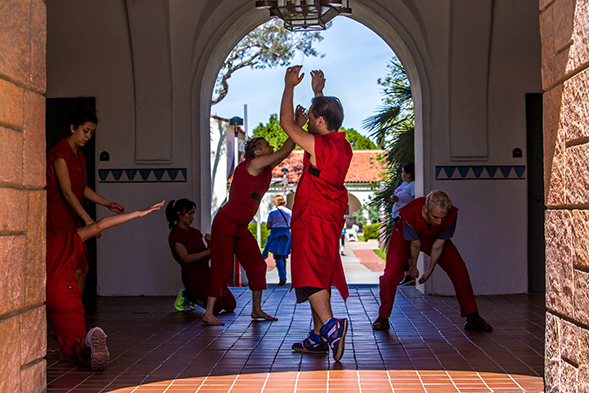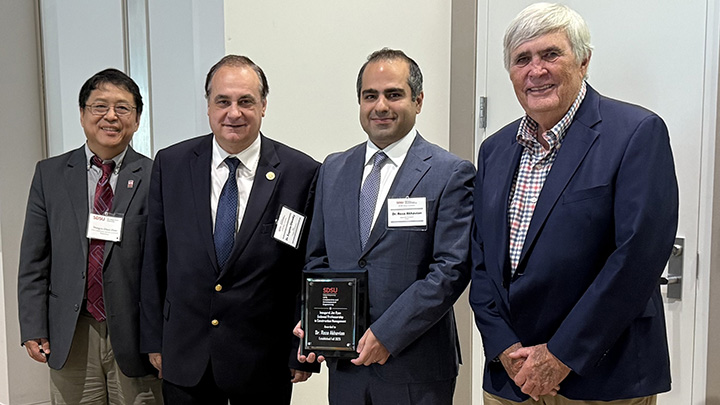Durational Dances Turn Heads on SDSU Campus
A dance practice in duration performed in public provokes thought from onlookers and performers alike.

Technique lesson turned public performance
According to SDSU dance professor Leslie Seiters, the durational dances originally began with an extended technique class she taught six years ago. Although the concept has evolved over time, Seiters cited a piece choreographed by Ralph Lemon titled, “How Can You Stay In The House All Day And Not Go Anywhere?” as a primary source of inspiration.“In the technique class, we attempt to sustain a single activity over time as a way to use dance to get beyond what we know about dancing," Seiters said. “We did things like having our eyes closed, looping, and shaking.”
The first public version of the durational dances was led by SDSU dance professor Jess Humphrey, and featured students ascending and descending a flight of stairs over a period of time.
Continuation despite challenges
The durational dances have multiple layers of value for the students who participate.“In the studio, durational practice comes from a place of extended technique, but also asks the students to reinvest, attempt to hold multiple tracks of attention at once, continue when tired or bored, commit to one thing over time, and to amplify an important aspect of dance education-learning in the doing," Seiters said. "This is research."
In today’s over-saturated digital world, she emphasized it can be a challenge for most people to remain committed to one activity without becoming distracted. This semester’s durational practice, called “Transformation,” is designed to address the challenge.
“Transformation is a score based on repeating a movement with gradual change over time,” Seiters said. “How do you do something that’s absolutely based on repetition, but never truly repeats?”
Thought-provoking for onlookers
The durational dances are both experimental and experiential for the dancers, and they also have a similar effect on audience members. Humphrey says ”if someone is willing to stay and watch long enough, it can elicit an empathic response from the viewer. They are giving someone permission to let their state be influenced. As you observe over time, does it become more or less strange?”“In a way, art is one of the few places to be in an experience of getting lost," Seiters said. "I deeply value art's ability to disorient, and in durational practice the sense of time (for performers and audience members) is akin to being in nature and could even make room for something like the discomfort of boredom.”
For opportunities to see future durational dances, check the Arts Alive SDSU website or Facebook page.



